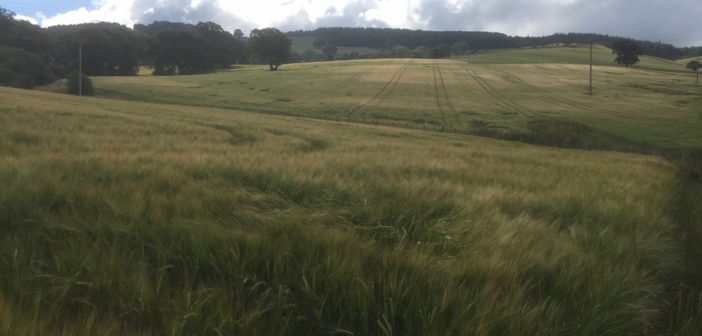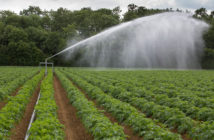Some spring cereals in parts of the UK are ripening so unevenly this year that many growers are expected to face problems with their harvest or storage.
Farmers in this situation are faced with the option of waiting for the entire crop to reach the dry grain stage by which time harvest may be late, some of the crop will be over-ripe and in-field losses are likely to be high, or harvesting before the entire crop is ripe and potentially experiencing heating in storage.
A third alternative of running the grain through a dryer is likely to be particularly expensive as some grains will inevitably become drier than needed in order to reduce the average moisture content of the entire crop.
However, there is an easy and cost-effective solution, according to feed preservation specialists, Kelvin Cave Ltd, who say unevenly ripened crops can be harvested moist and crimped before storage.
The crimping process, which is growing in popularity across the UK but has been used for decades in cooler, more northerly climates, allows cereals to be harvested and preserved at moisture contents of up to 45%.
The technique involves rolling early-harvested cereals through a crimping machine to expose the carbohydrate and protein, and adding a preservative, such as CrimpSafe 300, through an applicator on the machine. The crop is then stored in an airtight clamp or plastic tube where it undergoes a quick and controlled fermentation and remains stable for long-term storage.
“Because crimping can be carried out on crops at such a wide range of moisture contents, it is perfectly possible and very effective to crimp a crop which has ripened unevenly,” says Andy Strzelecki, Kelvin Cave’s technical director.
“This is certainly a situation I have seen on many farms this year, where spring cereals, particularly barley, were sown in very dry conditions – which continued through March, April and beyond in some areas – and germinated unevenly.
“This led on to uneven ear emergence and is now seen in uneven ripening,” he says.
“So, rather than wait for the entire crop to ripen, I’d suggest crimping the grain at the earliest opportunity.
“The best time for this will vary across the country but for spring-sown barley, is likely to run from late July to early August,” he says.
“The best animal performance will come from crimped barley if it is harvested at over 25% moisture, although a range of modern preservatives will allow crops to be crimped and ensiled from 15% moisture upwards,” he says.
Further benefits of crimping include enhanced animal performance and the operational benefits which come from an earlier harvest.
“Crimped grain is only broken down slowly in the rumen of cattle or sheep, meaning it can be far more safely fed and lead to better performance than if it had been dried,” says Mr Strzelecki.
“Furthermore, the earlier harvest is usually very popular with contractors and enables farmers to get on to their ground earlier for autumn cultivations,” he says. “Farmers also benefit from higher dry matter yields per hectare than achieved with dry cereals, and higher feed values, both of which occur because harvest usually takes place before there’s any disease, shrinkage or loss of grain.
“It’s one of those situations where everybody wins and explains why farmers who have tried crimping rarely look back,” he says.
“However, it’s particularly important to select a preservative for crimping which has a track record of achieving maximum nutrient retention and protection against spoilage,” he says.
The names of contractors offering a crimping service can be obtained from Kelvin Cave Ltd or farmers who already have a suitable crimping machine can add a preservative applicator to their own machine. The company’s team of area managers can not only advise on the equipment and preservatives best suited to each situation but can also offer advice on when a crop has reached the best stage for crimping.




